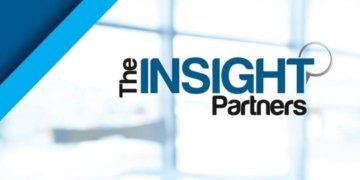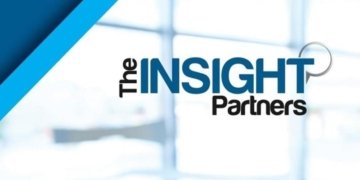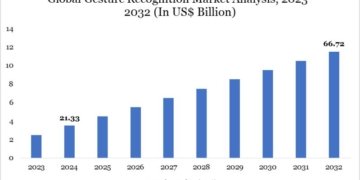As enterprises around the world seek to remain competitive in a rapidly evolving technological landscape, the demand for mainframe modernization services is surging. Driven by the imperative for increased operational efficiency, enhanced security, and scalability, businesses are turning to mainframe modernization to bridge the gap between legacy infrastructure and modern technology. According to recent market analysis, the global mainframe modernization services market was valued at US$ 23.5 billion in 2021 and is projected to grow at a substantial compound annual growth rate (CAGR) of 16.8% from 2022 to 2031. By the end of 2031, the market is expected to reach a valuation of US$ 108.9 billion, underscoring the growing significance of modernizing mainframe systems across industries.
Don’t Miss Out: Get Your Report Sample Now – https://www.transparencymarketresearch.com/sample/sample.php?flag=S&rep_id=64799
Key Market Drivers
The Urgent Need for Digital Transformation
Mainframe systems have long been the backbone of critical business operations across sectors such as finance, healthcare, government, and logistics. However, as digital transformation accelerates, organizations are seeking ways to improve agility, reduce maintenance costs, and ensure their technology infrastructure aligns with evolving digital requirements. Mainframe modernization services offer solutions that help businesses retain the reliability of their legacy systems while embracing the flexibility and scalability of modern technologies. This shift enables enterprises to integrate artificial intelligence, machine learning, and data analytics with their legacy systems, transforming data-rich mainframes into powerful assets that drive data-driven decision-making.
Growing Focus on Cloud Migration and Application Modernization
The rise of cloud computing is one of the primary drivers of mainframe modernization. By migrating mainframe workloads to the cloud, companies can benefit from improved scalability, reduced hardware costs, and enhanced disaster recovery capabilities. Cloud migration services are increasingly in demand as businesses recognize the value of flexible, cloud-native applications that can adapt to fluctuating demands. Application modernization, on the other hand, allows companies to update their mainframe applications, enhancing user experience and aligning them with modern coding standards. Through this process, companies can reduce technical debt, improve security, and ensure compliance with industry regulations.
Data Modernization and the Value of Real-Time Analytics
Data modernization is another critical component of the mainframe modernization services market, as companies strive to make legacy data accessible and actionable. Traditional mainframe systems often lack the infrastructure for real-time analytics and data integration, which are essential in today’s data-centric business environment. By implementing data modernization solutions, organizations can centralize their data, allowing for advanced analytics, real-time reporting, and seamless integration with modern applications. The increasing emphasis on data-driven decision-making in sectors like finance, retail, and healthcare has amplified the demand for data modernization services, creating a robust market for companies specializing in these solutions.
Key Market Segments
Service Type: Application Modernization, Cloud Migration, and Data Modernization
The mainframe modernization services market is segmented by service type into three main categories: application modernization, cloud migration, and data modernization. Each segment plays a unique role in transforming legacy systems and offers distinct advantages:
• Application Modernization: This involves updating legacy applications to improve functionality, user interface, and compatibility with modern systems. Application modernization reduces technical debt, increases system reliability, and enhances cybersecurity, making it a vital service for businesses looking to keep pace with technological advancements.
• Cloud Migration: Cloud migration services enable organizations to shift mainframe workloads to the cloud, providing increased flexibility, scalability, and access to cloud-native features such as machine learning, big data analytics, and advanced cybersecurity. As more companies recognize the value of cloud integration, demand for cloud migration services is projected to grow significantly.
• Data Modernization: By centralizing and upgrading legacy data, data modernization services allow businesses to unlock insights that drive innovation and competitiveness. This process includes data migration, restructuring, and integration with modern analytics platforms, enabling companies to make informed, data-driven decisions.
Visit our report to gain in-depth insights: https://www.transparencymarketresearch.com/mainframe-modernization-services-market.html
Enterprise Size: Small and Medium Enterprises (SMEs) and Large Enterprises
The mainframe modernization services market is segmented by enterprise size to address the unique requirements of small and medium enterprises (SMEs) and large enterprises:
• Small and Medium Enterprises (SMEs): As SMEs undergo digital transformation, they increasingly seek cost-effective, scalable solutions to modernize their legacy systems. Mainframe modernization services tailored to SMEs provide them with the opportunity to innovate, improve operational efficiency, and remain competitive.
• Large Enterprises: Large enterprises, often with complex, large-scale mainframe systems, invest heavily in mainframe modernization to enhance agility, improve system interoperability, and meet regulatory compliance. These companies view modernization as essential to maintaining business continuity and securing a competitive edge.
Market Trends and Challenges
Emerging Trends
Mainframe modernization is benefiting from a few key trends, including the rise of hybrid cloud models, the growth of containerization, and the adoption of DevOps practices. Hybrid cloud models, which blend on-premises infrastructure with public and private cloud environments, are becoming increasingly popular as companies seek flexibility without sacrificing security. Containerization and microservices architecture are also playing a significant role, as they enable organizations to break down legacy applications into modular components, making them easier to manage and update.
Key Challenges
Despite the advantages of mainframe modernization, there are several challenges facing organizations in this process. These include high initial costs, potential data migration risks, and the need for specialized skills to manage legacy and modern systems. Furthermore, mainframe modernization often involves lengthy transition periods, during which companies must maintain business continuity while shifting critical applications and data. To address these challenges, modernization service providers are increasingly offering managed services and consultancy to support organizations through each stage of their modernization journey.
Regional Analysis
The mainframe modernization services market exhibits strong growth across various regions, with North America leading due to its high concentration of large enterprises with legacy systems. North America’s focus on technological advancements and early adoption of digital transformation solutions has created a robust market for modernization services. Europe follows closely, with enterprises increasingly investing in modernization to comply with data protection regulations and improve data management capabilities. Meanwhile, the Asia-Pacific region is witnessing rapid growth as businesses in emerging economies, such as India and China, seek to modernize their infrastructure to compete in the global market.
Competitive Landscape
The competitive landscape of the mainframe modernization services market includes several prominent players, each contributing unique solutions and expertise to meet evolving market demands. Leading companies such as Atos Syntel Inc., Capgemini SE, Cognizant, Dell EMC, DXC Technology, EPAM Systems, Fujitsu Limited, Hexaware, IBM Corporation, Infosys Limited, Innova Solutions, Microsoft Corporation, Mphasis Ltd., Oracle Corporation, Software AG, TATA Consultancy Services, and Wipro are at the forefront of this market. These companies are actively investing in research and development, strategic acquisitions, and partnerships to expand their service offerings and cater to the diverse needs of global enterprises.
Click Here to Purchase this Comprehensive Insights Report @: https://www.transparencymarketresearch.com/checkout.php?rep_id=64799
About Us Transparency Market Research
Transparency Market Research, a global market research company registered at Wilmington, Delaware, United States, provides custom research and consulting services. The firm scrutinizes factors shaping the dynamics of demand in various markets. The insights and perspectives on the markets evaluate opportunities in various segments. The opportunities in the segments based on source, application, demographics, sales channel, and end-use are analysed, which will determine growth in the markets over the next decade.
Our exclusive blend of quantitative forecasting and trends analysis provides forward-looking insights for thousands of decision-makers, made possible by experienced teams of Analysts, Researchers, and Consultants. The proprietary data sources and various tools & techniques we use always reflect the latest trends and information. With a broad research and analysis capability, Transparency Market Research employs rigorous primary and secondary research techniques in all of its business reports.
Contact Us:
Transparency Market Research Inc.
CORPORATE HEADQUARTER DOWNTOWN,
1000 N. West Street,
Suite 1200, Wilmington, Delaware 19801 USA
Tel: +1-518-618-1030
USA – Canada Toll Free: 866-552-3453
Website: https://www.transparencymarketresearch.com
Email: sales@transparencymarketresearch.com
This release was published on openPR.

















